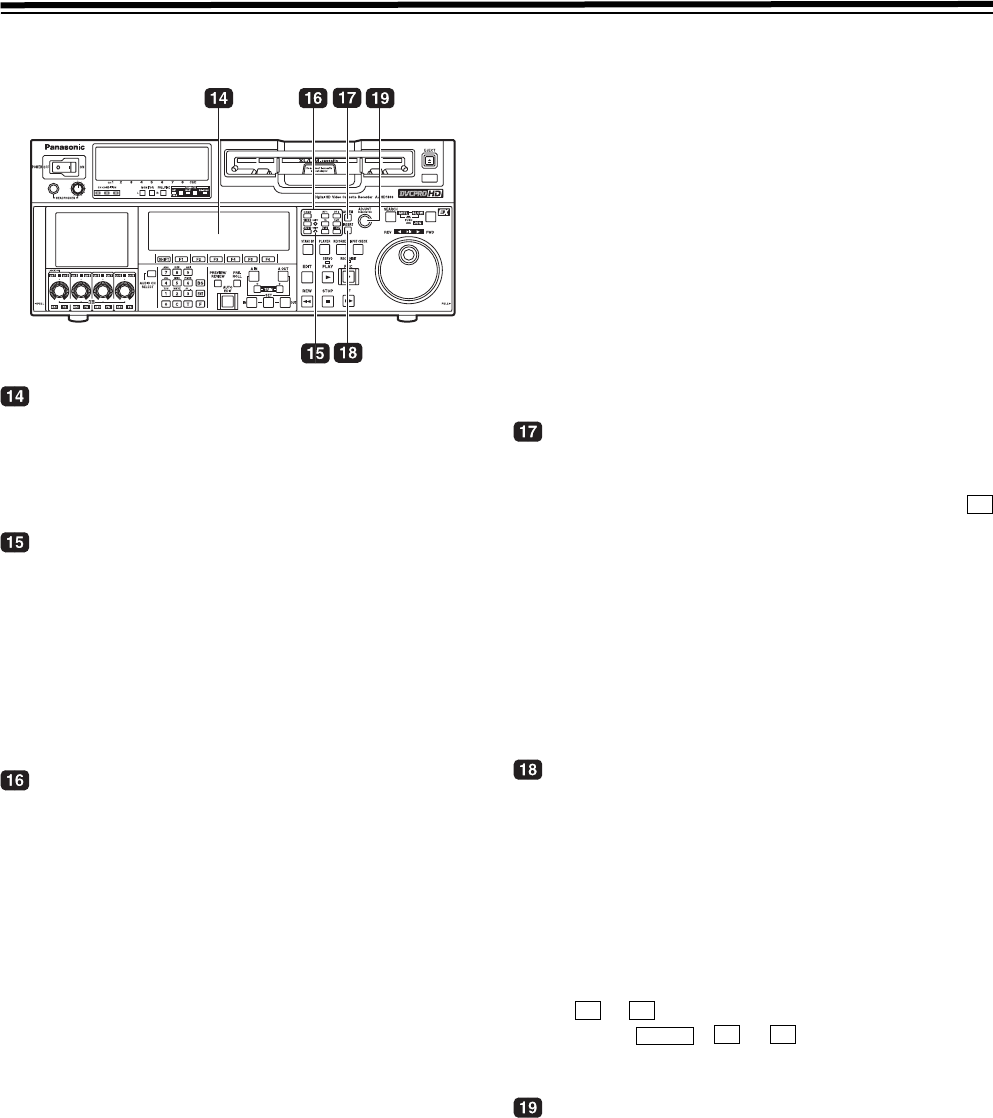
12
Parts and their functions (continued)
Front panel (3)
Time code display
The data, VTR status information, tape format information
or warning information which corresponds to the direct
menu buttons appear on this display. (See page 38 and
following for details of the displays.)
UNITY lamps
VIDEO UNITY lamp
This lights if all image output levels of the HD/SD
are UNITY.
AUDIO UNITY lamp
This lights if the UNITY level applies for the PCM
or CUE AUDIO input or output level. (The lighting
of the lamp complies with the setting selected for
setup menu item No.142 (AUDIO UNITY).)
Direct menu buttons
These buttons are used to switch directly to the function
menus on the time code display.
HOME:
The most basic settings of recording, playback
and time code operations are selected on this
menu.
VIDEO:
The basic input and output settings for the video
signals are selected on this menu. The level of
the HD output signals can also be adjusted on
this screen.
AUDIO:
The basic input and output settings for the audio
signals are selected on this menu.
PF1: This enables user-defined menu items to be
registered in the function keys.
PF2: This enables user-defined menu items to be
registered in the function keys.
TC: The settings related to the time code are selected
on this menu. Superimposing the time code on
the display can also be set on this screen.
CUE: This enables up to 60 cue points to be set. In the
PAGE mode, 10 pages with 6 cue points on each
page are provided so that the cue points can be
managed on a page-by-page basis.
DIAG: This enables confirmation of information such as
the warning/hour-meter/UMID. On the SHIFT
screen, the error log files can be checked and
deleted.
MENU:
On this menu, it is possible to transfer operation
to the screen on which operations (adjustments
and saving data in or loading it from the internal
memory and SD memory card) relating to the
SYSTEM and SETUP menus are to be
performed.
See page 38 and following for further details on each of
the function menus.
ASSEM button
This button is used to perform assemble editing.
When it is pressed, the <ASSEMBLE> menu appears on
the time code display. Setting ASSEM to ON using
enables assemble editing, and the lamp of the ASSEM
button lights.
Even after operation is transferred by another direct
menu, the assemble mode will remain established while
the ASSEM button lamp is lighted.
Press the [F1] button when the <ASSEMBLE> menu is
displayed to turn OFF the ASSEM item on the screen.
The ASSEM button lamp now goes off and the assemble
mode is released
INSERT button
This button is used to perform insert editing.When it is
pressed, the <INSERT> menu appears on the time code
display, and the function menu for selecting the signals to
be edited is displayed.
To select the signals to be edited, press the function key,
and highlight the display. The highlighted display
indicates that those signals are selected.
To release the selection, press the same function key
again.
Use to to select the V, A1, A2, A3, A4 and CUE
signals; use + to to select the A5, A6, A7,
A8 and TC signals.
ADJUST dial (ADJ dial)
This is used for the menu and other operations.
F1
F1 F6
SHIFT
F2 F6
